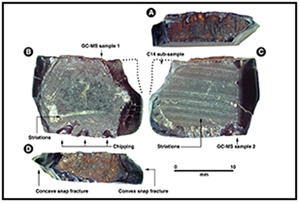Multi-proxy archaeological and palaeoecological analyses of the Mololo Cave sequence on the palaeo-island of Waitanta provide evidence for the earliest known peopling of the Pacific region >55 000–50 000 years ago. These humans practised complex plant processing and engaged with both coastal and tropical forest ecologies.
Capacities for adaptive flexibility and environmental transformation likely stimulated human movements into insular rainforests, previously beyond the range of other hominin species. These settings help us to understand the process of cultural and biological diversification generated as our species dispersed around the planet and began to push the boundaries of novel habitats, and how humans have become enmeshed in these ecologies for tens of millennia.


